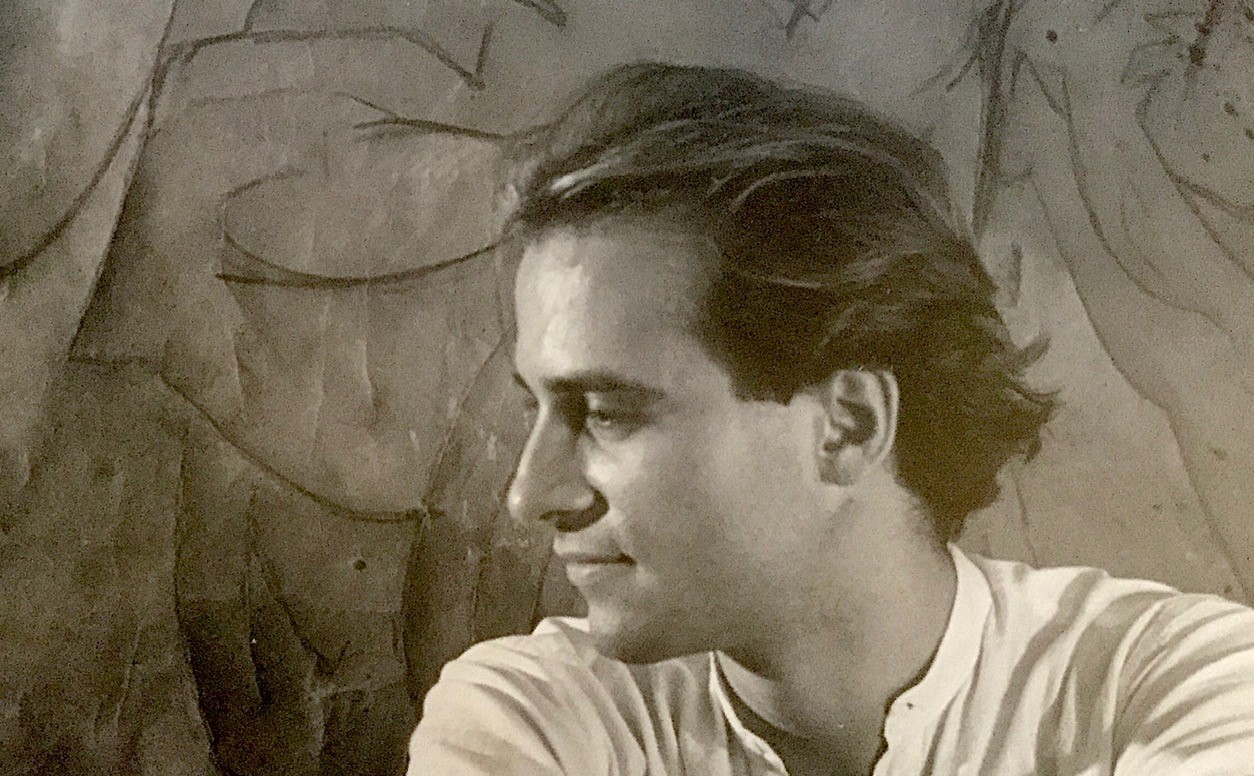
Douglas Lebrecht (1980) – Courtesy of James Sengelis. Used with permission.
This past spring, former students in the theatre department, known at the time as Purdue-Indiana Theatre (PIT) at Indiana University-Purdue University Fort Wayne, from the mid-to-late 60s, including yours truly (1965-1968), were planning to reunite for a ceremony at which a plaque in memory of theatre program founder Robert W. Tolan was to be unveiled in the what was once the theatre space. Unfortunately, due to the pandemic, the event was canceled. Previously, an email list of alumni was established, allowing exchanges between far-flung former classmates. Research shows quarantine has increased people’s need for human connection, compelling many to reach out via the internet and phone to family and friends, past and present.
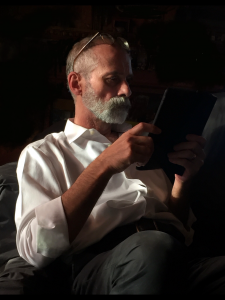
Douglas Lebrecht – Courtesy of Paul Conway. Used with permission.
Initially, the emails between PIT alums were heavy on reminisces about classes, productions and social interaction, as well as stories about individual students and teachers. But eventually, the messages became more introspective and reflective about how PIT ultimately influenced us and how the experiences and life lessons learned there had impacted our adult lives. Along the way, many also shared updates on their current lives, which for some is retirement, while others are still working. It was so meaningful for me to refresh and reignite my friendships with many of these peers. Like others my age, I have ascertained my college friendships are the most enduring because these are the people who helped form me and teach me how to interact with others.
When I was at PIT, I was fully aware I had outstanding professors and surrounded by contemporaries possessing rare talent. But it wasn’t until much later, I realized just how extraordinary many of my classmates were. That estimation stems not only from my own professional experience, which gives me a measuring stick, but also from the career accomplishments of many PIT students, who went on to work professionally in the theatre, film, television, education and communications. The group includes Emmy award-winning actors, distinguished directors, producers, arts administrators, designers, educators, and broadcasters, as well as those who excelled in other professions, including the clergy.
One of the PIT classmates with whom I have reconnected within the past few months is Douglas Lebrecht. Of all the interesting journeys taken by my former classmates, some of which I look forward to writing about in the future, Lebrecht’s is one of the more remarkable considering his roots. His uniquely American story stretches from humble beginnings to the pinnacle of the performing arts world. A 1967 graduate of New Haven High School, Lebrecht grew up on a 28-acre farm outside Fort Wayne. Currently, he lives in New York, where he’s resided since 1974. In retirement since 2016, Lebrecht spent 24 years at the Metropolitan Opera, serving in his official capacity as Chargeman Scenic Artist, an industry term for head scenic artist.
It has been many years since we last laid eyes on one other. Lebrecht, age 70, and I happily reunited by phone recently from his long-time Upper West Side home, which he shares with his husband Paul Conway, whom he married in 2011 on their 30th anniversary. The couple have three cats, Romeo, Big Velma and Mademoiselle Fifi. Catching up after so many years was effortless, lending credence to the notion that you can easily pick up where you left off with old friends.
Recalling his early life, Lebrecht said, “Mom had been a secretary, but gave that up and maintained the farm, while dad was gone from 6:00 a.m. to 6:00 p.m. He worked as a tool and die maker at General Electric for 42 years. We kept cows, sheep, rabbits, chickens, and harvested field corn. Dad also had a small nursery. We sold plants and had a vegetable stand on the road. It was the full Midwestern treatment.”
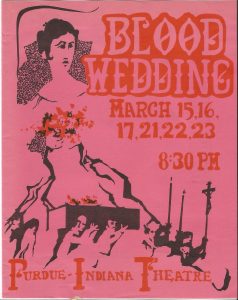
Progam cover design by Douglas Lebrecht, created when he was a PIT student. Courtesy of Ton Alvarez collection.
Graduating early from high school at age 17, Lebrecht initially studied graphic design at IPFW prior to ending up in a drafting class taught by professor O. Franklin Kenworthy, who also taught stagecraft for the theatre department and designed PIT sets. After being recruited by Kenworthy, Lebrecht found himself designing posters and programs for productions. Because there was no printing budget, Lebrecht created the posters using silk screen and reproduced the designs on printed programs. Looking back at his early work now, it’s clear Lebrecht was born with an eye for design. Eventually, he said he “tried to be handy” and began building and painting sets under the mentorship of Kenworthy and Dennis Shenk, a PIT technical assistant.
Leaving school after two and half years, Lebrecht decided to pursue a professional career in the theatre. “My parents, who had been denied the possibility of an education by circumstances of the Great Depression, instilled in us the sense that we ought to be perfectly capable of achieving things that were beyond their imagination,” said Lebrecht regarding their support of his goal. Eventually, he was led to Baltimore Center Stage, where Shenk, who was then employed as technical director, hired him as a carpenter to build sets. After a few years there, Lebrecht followed Shenk to Studio Arena Theatre in Buffalo, where he had been lured by Robert Tolan, who by then was the general manager. There, he also worked as both a carpenter and painter and first tried his hand at scenic design. Eventually, Tolan left and Lebrecht said he was advised to head to New York if he hoped to make a living. “I was at loose ends, I eventually fought my resistance and moved there, took my union exam, became a member (of United Scenic Artists Local #829) and began as a scenic artist for commercial shops that turned out scenery for Broadway theatre.” recalled Lebrecht.
From the year of his arrival until he was officially hired by the Met, Lebrecht made a lot of connections painting in the professional shops and even worked temporary gigs as a journeyman scenic artist at the Met starting in 1978. During those early years, throughout an eight-year period, he worked on commercials. “I wallpapered more kitchen sets than I care to think about,” he joked. He also worked on films produced in the city, including such movies as “Hair,” “Once Upon a Time in America,” “The Verdict,” and many others by famed director Sidney Lumet. At one point while working at Radio City Music Hall, he met the man who would eventually precede him at the Met. Impressed with Lebrecht’s talent and work ethic, the man hired him as one of his personal assistants when he took over the head job at the Met and had him run one of its shops. Eventually, when he was ready to retire, he asked Lebrecht if he wanted the job.
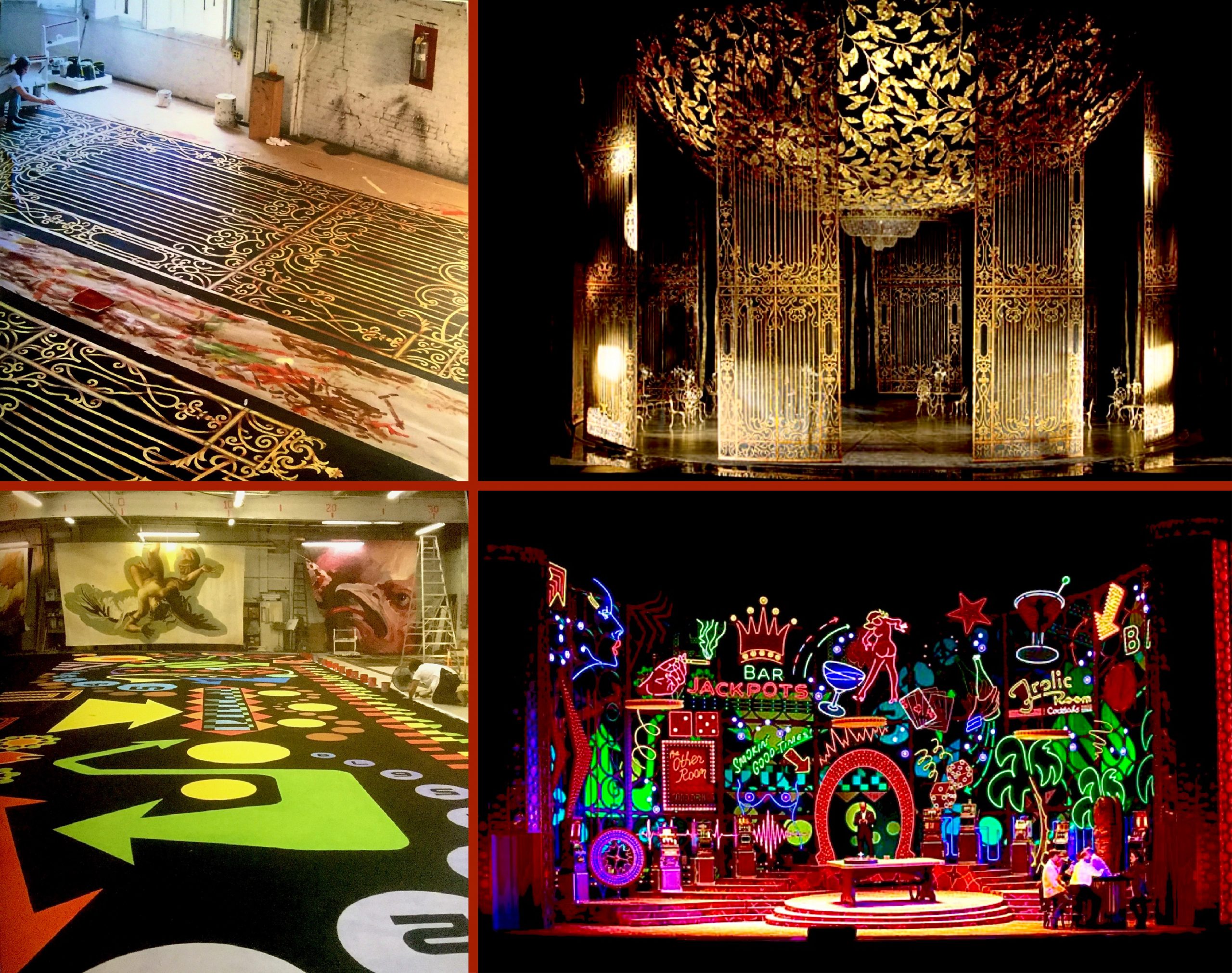
Upper L. Die Fledermaus on the shop floor – Courtesy of Bill Sohmer. Upper R.. Die Fledermaus – Courtesy of Beth Bergman/Metropolitan Opera. Lower L. Rigoletto on the shop floor -Courtesy of Kay Bloss. Lower R Rigoletto – Courtesy of RonBerardo/Metropolitan Opera. Photos used with permission.
During his tenure at the Met, Lebrecht oversaw 750 productions, both new and revivals. When asked to name some of his favorite productions, he laughed, “Always the next one. I never looked back.” He worked with such renowned directors as Franco Zeffirelli, Jonathan Miller, Graham Vick, Andrei Serban, Jürgen Flimm and Anthony Minghella. Prestigious designers he collaborated with included Santo Loquasto, Zeffirelli and Richard Peduzzi, Rob Howell, Rob Jones, Julian Crouch, Christine Jones and many others.
Though he did not have direct contact with performers, Lebrecht said he was always “completely focused on what was going on with them in the moment and removing any anxieties they might have about the sets. I did my best to take care of their needs without intruding on them in personal ways.” He added, “Some of them were very nice and friendly. Some of them were stiff and lost in their own world and some of them were complete divas.” Performers he considered particlarly dynamic were Anna Netrebko, Debra Voigt, and especially Luciano Pavarotti. “All rehearsals were played over an intercom system throughout the house. Stagehands, maintenance people and cafeteria workers would cock their heads, listen, and say ‘I didn’t know Luciano was onstage today!’”
As for the incredible pressure he said he experienced supervising up to 50 people, Lebrecht described his typical daily schedule. “We came in at 8:00 in the morning. We had from 8:00 until 11:00 to fix whatever had been exposed in the previous day’s rehearsal before the 11:00 rehearsal started and that ran until 2:30 or 3:00 p.m. When it ended, we changed what had been on stage during the day to the evening performance. When the evening performance, which typically began at 8:00 p.m., was over sometime before midnight, the night gang came in and changed over the evening’s performance to the next day’s rehearsal. They left at 8:00 a.m. when we came in,” he said.
Besides overseeing all productions at the Met, Lebrecht also had the opportunity to travel widely while attending production meetings on behalf of the organization. “I got sent all over the world by the Met. I am enormously grateful for that because without the Met, I doubt I would have gone to Rome, or London, or Vienna or Munich. There were a lot of opportunities afforded to me. It was gratifying ” he said, adding, “I like to think I was there to present the Met in its best light to the people of the world. The resources we had in terms of scenic artists and the Met’s overall brand are the best on the globe.”
I asked Lebrecht if he experienced grief when he retired, to which he replied, “I did. Immediately, I missed the responsibilities. I missed taking care of people. I missed making sure they had a living. I missed making sure they were gainfully employed. I missed that connection. And then I missed the people. I just missed being around them because I had been a crew person my entire life. I missed that sense of personality. Then I just segued out of that into just missing that process of being involved with other creative people for a common end.” Eventually, Lebrecht said he worked his way out of the funk. He continued to get phone calls asking for information or advice, but eventually, they became fewer and fewer. Also helping him was his husband Paul who told him, “Not your circus; not your monkey. Don’t answer your phone.”
As we began to wrap up our chat, it occurred to me Lebrecht must have experienced “pinch myself” moments at the Met. “I would walk out onto the stage of the Metropolitan Opera and stand by the prompt box and look out at the house and think, “Wow! I work here” many times. Considering where I came from, I was always enormously gratified to simply be a part of such a major arts organization in the United States and the world for that matter. From the sheer volume of its repertory and seats and its influence and ability to shift the artistic landscape. And there I was. I tried never to take it for granted. It was frequently difficult. The work itself was incredibly pressured and intense and with me being a Midwestern workaholic, I was much more involved in it than I probably should have been, but I try never to forget that it was a privilege.”
At his retirement, Lebrecht said, “It had been calculated that my work had been seen by 10 million ‘butts in seats’ in the house and 20 million if you add the HD live performances. Sounds exhausting, doesn’t it? One of the people who works for me and my assistant put together my love-letters file. Over the years I had shoved all these things from opening night into a file folder, They dug them all up and mounted them in a book for me. I went back through and read designers talking about their gratitide for this or their hopes for that or their thoughts. What a privelege it is for a boy from Indiana to have a love-letters book and people saying they couldn’t believe the work you did.”
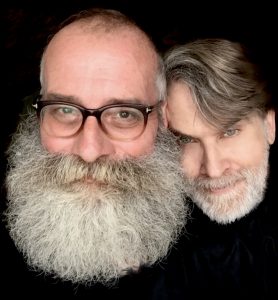
Douglas Lebrecht & Paul Conwy – Courtesy of Doulgas Lebrecht. Used with permission.
As for retirement, Lebrecht said, “I read and garden and have come to enjoy my life. I like where we live. Paul ans I are real homebodies. I enjoy New York. Being a country boy, I have always liked being in a neighborhood, within an area, within a city. It made this place comprehensible and not overwhelming. Also, after decades of commuting hours a day to shops and locations, I got to end my career just a stroll away from the Met! Paul and I had never spent more than two weeks together in almost 35 years and we found that we actually enjoyed being in each other’s presence and that’s a nice revelation.”
Curious about Lebrecht’s parents, Franklin and Hildegarde, who both passed away in the 90s, I asked how they felt about his success. “My mother didn’t own a book without my drawings on every flyleaf, so she was thrilled a career in art paid off. My father ‘accidentally’ left the Met’s glossy yearbook open to the credit page on the coffee table,” he said proudly.
Sharing my avocation of arts education, I asked Lebrecht if he had any advice for aspiring theatre artists. “The same that I always gave, study, observe, notice, record everything you see in your memory banks. If you want to work in the theatre, then do it! Go work in a theatre! There’s always a theatre near you that needs help, so go help. No experience is a bad experience if what you take away from it is useful later on. And to quote set and costume designer Tony Walton, ‘Keep the artistry–lose the personality,'” Walton would say the phrase to mimic one of the most famous lines in movie history “Leave the gun–take the cannoli,” according to Lebrecht.
Before signing off, I asked Lebrecht to summarize what he hoped the post-pandemic “new normal” would be. “After years of working in isolation, trying to achieve a sense of connection to replace the feeling of waiting together in the dark, waiting for the curtain to go up, playwrights, musicians, actors, directors, dancers and all performing artists will have new ideas about what worked and I hope will put those techniques to good use. I long to ‘go to the theatre’ and will take special enjoyment from being part of an audience again, but I trust the young’uns to make it better for everyone.”





